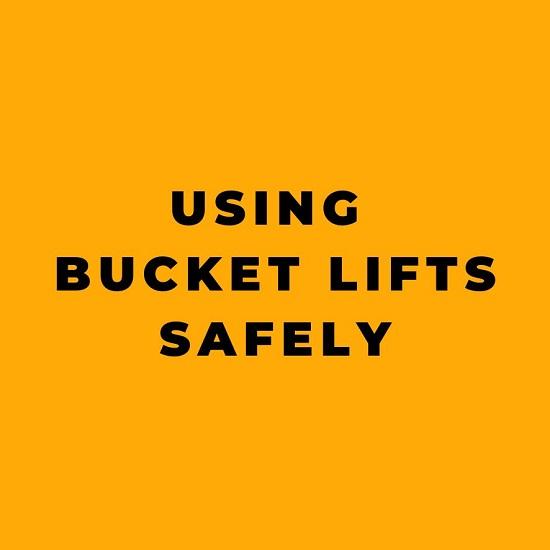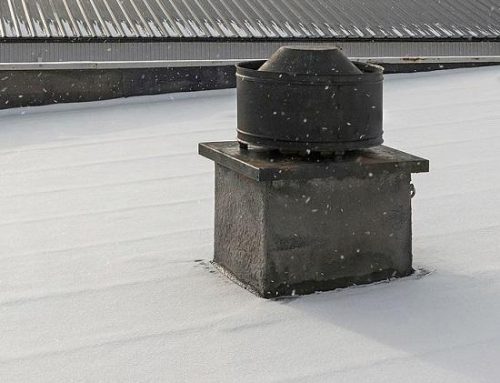Bucket lifts, also known as aerial lifts or boom lifts, are essential equipment in many industries, especially in construction, maintenance, and repair work. While bucket lifts provide a safe and efficient way to access elevated work areas, they also come with inherent risks, particularly the risk of falls from heights. According to OSHA, falls from aerial lifts can be prevented by following specific safety measures and guidelines. In this comprehensive guide, we will delve into the topic of using bucket lifts safely, covering key concepts, practical tips, and essential safety measures to ensure the well-being of workers who operate these lifts.
Key Concepts and Background Information
Before we delve into the specifics of using bucket lifts safely, it’s important to define key concepts and provide background information. Bucket lifts are elevated platforms that are mounted on hydraulic arms or booms. These lifts allow workers to access elevated work areas safely and efficiently. They are commonly used in construction, maintenance of buildings and facilities, tree trimming, and other tasks that require working at heights.
The Risks and Hazards of Working with Bucket Lifts
The sheer size of bucket lifts often goes unnoticed until employees begin working with them. When workers are improperly trained, falls can occur, leading to serious injuries or fatalities. The risks associated with bucket lifts include falls from heights, being struck by objects, tip-overs, and electrical hazards. It is crucial for workers to be aware of these risks and follow safety protocols to mitigate them.
Safety Measures and Guidelines for Using Bucket Lifts
To prevent falls from aerial lifts, workers need to assess their surroundings and ensure there are no objects, other vehicles, or workers nearby that may strike or come in contact with the lift. OSHA requires that all aerial lift workers wear adequate fall protection equipment, including full-body harnesses and lanyards attached to the lift or basket. Additionally, workers need to adhere to the following safety guidelines:
1. Ensure all access gates or openings are closed when inside the lift basket or platform.
2. Stand firmly on the floor of the bucket or platform.
3. Never climb on or lean on the guardrails.
4. Never use ladders or planks in a working position while in the aerial lift bucket or platform.
5. Never tie off to structures or poles while in the bucket.
6. Always adhere to your company’s personal protective equipment (PPE) policies.
It’s also important for workers to wear a hard hat, be aware of clearances (ceiling, overhead, and side protruding objects), and not position aerial lifts between overhead hazards if possible. Workers should also avoid placing tools or materials on the guardrails of the bucket or platform, as this can create a trip hazard and increase the risk of falling objects.
Adhering to Weight Limits and Load Capacity
Each bucket lift has a specific weight capacity, and it is crucial for operators to identify and adhere to these restrictions. Exceeding the weight limit, even slightly, could potentially make the lift top-heavy and cause it to tip over. Operators should account for their weight on the lift as well as all tools and materials on the platform to ensure that the combined weight does not exceed the recommended capacity. It’s also important to remember not to use the bucket lift for lifting heavy supplies, as this can compromise the stability and safety of the lift.
Training and Certification for Lift Operators
Hiring employees who are properly trained to operate bucket lifts and who maintain relevant safety certifications and knowledge is essential for ensuring workplace safety. Testing potential new hires with hands-on assignments that demonstrate their operational knowledge of the lift can help detect potential problems and address them before any accidents happen on the actual job. Proper training and certification empower operators with the knowledge and skills required to operate bucket lifts safely and effectively.
Regular Inspections and Maintenance of Bucket Lifts
Regular inspections of bucket lifts are essential to ensure that controls are working as intended. An inspection can go a long way to ensure that the lift is in optimal working condition, reducing the risk of accidents due to mechanical failures. Operators should also be mindful not to exceed load capacity limits, avoid traveling to a job site with the lift raised, and not drive near holes or drop-offs. It’s also important not to raise the platform while on unstable, uneven surfaces. Sloped ground and windy weather can present serious safety hazards in construction.
Common Misconceptions and FAQs
It’s common for workers to underestimate the risks associated with operating bucket lifts, leading to a lack of adherence to safety guidelines. Some common misconceptions include assuming that falls from bucket lifts are rare or that wearing fall protection equipment is unnecessary. However, the reality is that falls from bucket lifts can occur, and wearing fall protection equipment is crucial for preventing serious injuries or fatalities.
Final Thoughts and Conclusion
Using bucket lifts safely is paramount for ensuring the well-being of workers who operate these lifts. By following OSHA guidelines, adhering to weight limits, receiving proper training and certification, conducting regular inspections and maintenance, and being mindful of potential hazards, workers can mitigate the risks associated with operating bucket lifts. Employers, employees, and all personnel involved with workplace safety play a crucial role in maintaining a safe working environment when using bucket lifts. By prioritizing safety and adhering to best practices, the industry can ensure that workers can carry out their tasks at heights safely and efficiently.










